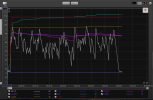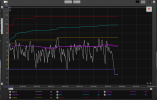Rubberducky
Member
- Joined
- Jun 30, 2021
- Messages
- 29
- Likes
- 8
I've moved into a new place and will set up a home cinema room. I want to make sure we don't disturb the neighbors and they are willing to let me do some measurements. Before I do this, I want to make sure I'm measuring the correct thing.
My current plan is to generate pink noise at sufficient volume with REW and use my MiniDSP UMIK1 and check what the level (I'm assuming C weighting is the best choice here) in my room e.g. 1m from the speakers is. Then I want to measure what the level at the other side of the wall is (in the neighbors house). This will give me a difference in C-weighted SPL. (The attenuation of the wall)
Then I could lower the volume of the pink noise until the neighbors can't hear it anymore, even if I pulsate it on and off and measure that level at my place. This tells me the max level I can play at during the night. During the day I might be able to go a bit higher if I check with the neighbors.
The question is: am I taking the correct variables into account? Bass frequencies will be attenuated much less than the higher ones, but this is taken into account in the C-weighted SPL already. People are more sensitive to different frequencies, but this is also taken into account when C-weighting. Any tips / tricks here?
Thanks!
My current plan is to generate pink noise at sufficient volume with REW and use my MiniDSP UMIK1 and check what the level (I'm assuming C weighting is the best choice here) in my room e.g. 1m from the speakers is. Then I want to measure what the level at the other side of the wall is (in the neighbors house). This will give me a difference in C-weighted SPL. (The attenuation of the wall)
Then I could lower the volume of the pink noise until the neighbors can't hear it anymore, even if I pulsate it on and off and measure that level at my place. This tells me the max level I can play at during the night. During the day I might be able to go a bit higher if I check with the neighbors.
The question is: am I taking the correct variables into account? Bass frequencies will be attenuated much less than the higher ones, but this is taken into account in the C-weighted SPL already. People are more sensitive to different frequencies, but this is also taken into account when C-weighting. Any tips / tricks here?
Thanks!

